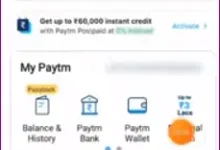INFORMATION
Explained: What is e-wallet scam and how you can stay safe

[ad_1]
An e-wallet scam is a fraudulent attempt to steal money or personal information from someone using an electronic wallet, also known as a mobile wallet. These scams can take many forms, but they all have the same goal: to trick you into giving up your financial data or allowing unauthorised access to your e-wallet account.
Here are some common types of e-wallet scams:
* Phishing: Scammers may send you fake emails or text messages that appear to be from your e-wallet provider.These messages will often contain a link that, when clicked, will take you to a fake website that looks like the real e-wallet login page. If you enter your login information on this fake website, the scammers will steal it.
* Smishing: Similar to phishing, smishing uses SMS texts to deliver the phishing link.
* Vishing: Scammers may also call you on the phone and pretend to be from your e-wallet provider. They may ask you for your personal information or try to trick you into downloading malware onto your device.
* Fake apps: Scammers may create fake e-wallet apps that look like the real ones. If you download and install one of these apps, the scammers can steal your login information or even access your phone’s contacts and other personal data.
* QR code scams: Scammers may display malicious QR codes in public places that, when scanned, can redirect you to phishing websites or download malware onto your device.
* Social engineering: Scammers may try to trick you into giving up your information or authorizing a transaction by pretending to be a friend, family member, or customer service representative.
* Man-in-the-middle attacks: These attacks occur when a scammer intercepts communications between your device and your e-wallet provider. This can allow them to steal your login information or even take control of your account.
Here are some tips to avoid e-wallet scams:
* Never click on links or download attachments in emails or text messages from your e-wallet provider, even if they look legitimate.
* Always type the e-wallet provider’s website address directly into your browser, rather than clicking on a link.
* Be wary of unsolicited calls or text messages from your e-wallet provider. If you think the call or text message might be real, contact your e-wallet provider directly using a phone number or website address that you know is legitimate.
* Only download e-wallet apps from official app stores.
* Be careful about scanning QR codes, especially in public places.
* Don’t give out your e-wallet login information to anyone, including friends, family, or customer service representatives.
* Be aware of common social engineering tactics, such as urgency, fear, or flattery.
* Use strong passwords and enable two-factor authentication for your e-wallet account.
* Keep your e-wallet app and your device’s operating system up to date with the latest security patches.
* If you think you’ve been the victim of an e-wallet scam, contact your e-wallet provider immediately and report the scam to the authorities.
Here are some common types of e-wallet scams:
* Phishing: Scammers may send you fake emails or text messages that appear to be from your e-wallet provider.These messages will often contain a link that, when clicked, will take you to a fake website that looks like the real e-wallet login page. If you enter your login information on this fake website, the scammers will steal it.
* Smishing: Similar to phishing, smishing uses SMS texts to deliver the phishing link.
* Vishing: Scammers may also call you on the phone and pretend to be from your e-wallet provider. They may ask you for your personal information or try to trick you into downloading malware onto your device.
* Fake apps: Scammers may create fake e-wallet apps that look like the real ones. If you download and install one of these apps, the scammers can steal your login information or even access your phone’s contacts and other personal data.
* QR code scams: Scammers may display malicious QR codes in public places that, when scanned, can redirect you to phishing websites or download malware onto your device.
* Social engineering: Scammers may try to trick you into giving up your information or authorizing a transaction by pretending to be a friend, family member, or customer service representative.
* Man-in-the-middle attacks: These attacks occur when a scammer intercepts communications between your device and your e-wallet provider. This can allow them to steal your login information or even take control of your account.
Here are some tips to avoid e-wallet scams:
* Never click on links or download attachments in emails or text messages from your e-wallet provider, even if they look legitimate.
* Always type the e-wallet provider’s website address directly into your browser, rather than clicking on a link.
* Be wary of unsolicited calls or text messages from your e-wallet provider. If you think the call or text message might be real, contact your e-wallet provider directly using a phone number or website address that you know is legitimate.
* Only download e-wallet apps from official app stores.
* Be careful about scanning QR codes, especially in public places.
* Don’t give out your e-wallet login information to anyone, including friends, family, or customer service representatives.
* Be aware of common social engineering tactics, such as urgency, fear, or flattery.
* Use strong passwords and enable two-factor authentication for your e-wallet account.
* Keep your e-wallet app and your device’s operating system up to date with the latest security patches.
* If you think you’ve been the victim of an e-wallet scam, contact your e-wallet provider immediately and report the scam to the authorities.
[ad_2]
Source link






























